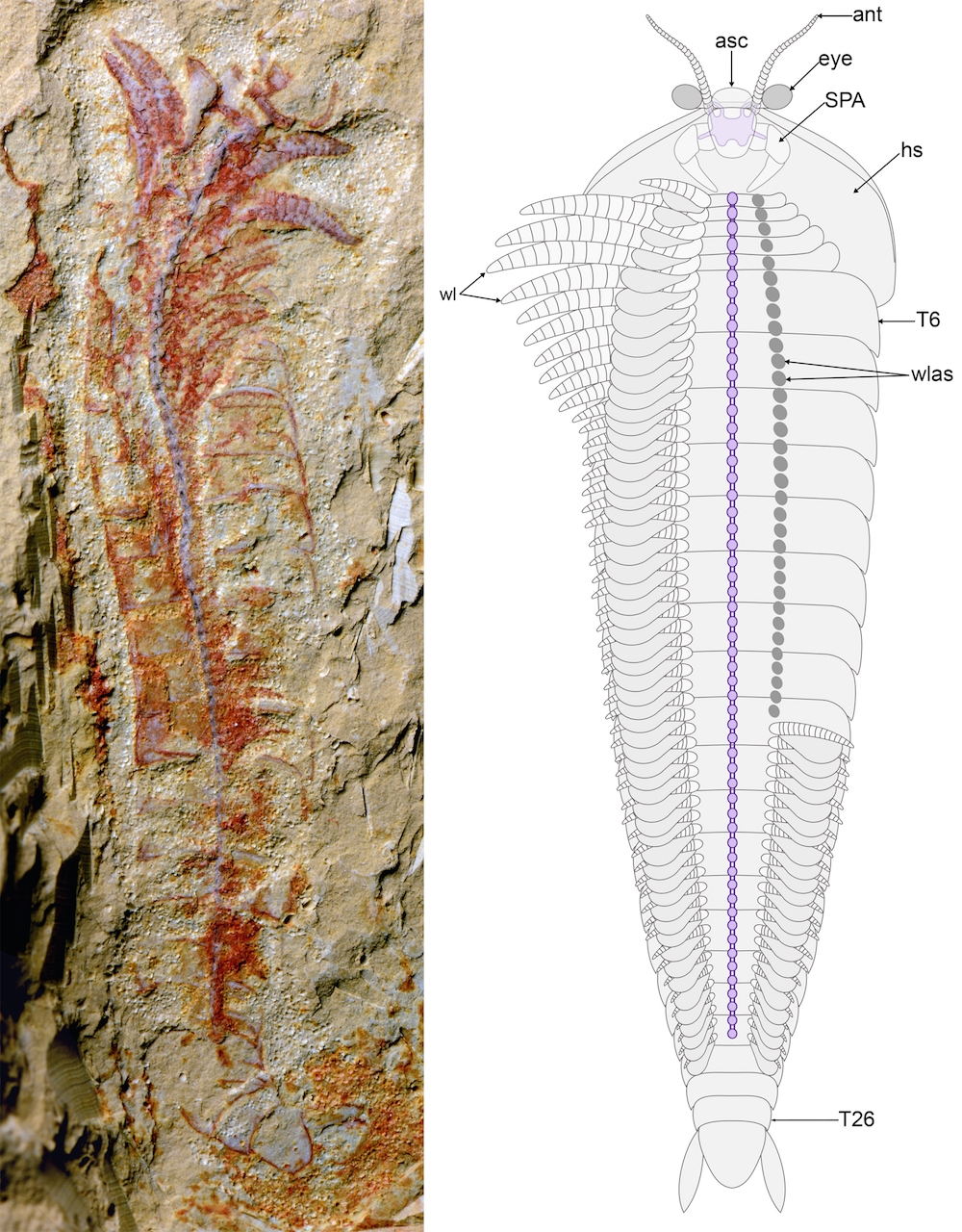On the unique fossil age of 0.5 billion years, even the nervous system of the animal is visible

Our planet often surprises scientists. Paleontologists are generally more like treasure hunters, and despite the fact that searches for long-extinct animals are carried out strictly according to science, some finds are like treasures. That is what can be said about the fossil, which was recently found in China. Its age is 520 million years, and the animal itself (Chengjiangocaris kunmingensis) is a relative of modern crustaceans.
It is surprising that not only the chitinous shell with all the details was imprinted on the breed, but also the nervous system of the animal. This is almost incredible success, and certainly the best instance of the preserved structure of the nervous system of an animal that has become extinct millions of years ago. Usually only hard parts of the body, such as teeth, bones, chitinous membranes, are stored. Fabrics are extremely rarely mineralized, and this type of “colored” fossil is generally unique. In the center of the entire fossil, there is a clear purple line, the so-called nerve cord (the ancient “spinal cord”). On the line there are visible thickenings - these are ganglia, located between each of the pairs of legs of the animal.
According to Javier Ortega-Hernandez, the leader of a group of researchers who found the fossil, these ganglia were something of a mini-brain for each of the pairs of legs of an ancient crustacean. After a detailed examination of the findings, dozens of smaller auxiliary nerve endings were found, which were located fanlikely along the entire length of the string.
')

The study of the petrified nervous system of an animal showed the presence of many tens of nerve fibers about 0.005 mm long. Now scientists want to find out if these fibers were made up of the same tissue as the ganglia of the nerve cord. “Using fluorescence microscopy, we found out that these fibers, in fact, are individual nerve endings, which are petrified in the form of carbon films, with unusually clear detail. This fossil significantly improved our understanding of the evolution of the nervous system, ”says Javier Ortega-Hernandez.
Further analysis showed that the structure of the nervous system of C. kummingensis is similar (in some details) to the structure of the nervous system of modern Priapulides and onychofors . Interestingly, the descendants of C. kummingensis had a much more simple nervous system, so there is a process of degeneration.
In general, the C. kunmingensis nervous system is unique, modern organisms have some similar structural features, as mentioned above, but there are no analogues. Scientists continue to study C. kunmingensis, receiving new information on the evolution of the Cambrian animals.
Source: https://habr.com/ru/post/391035/
All Articles